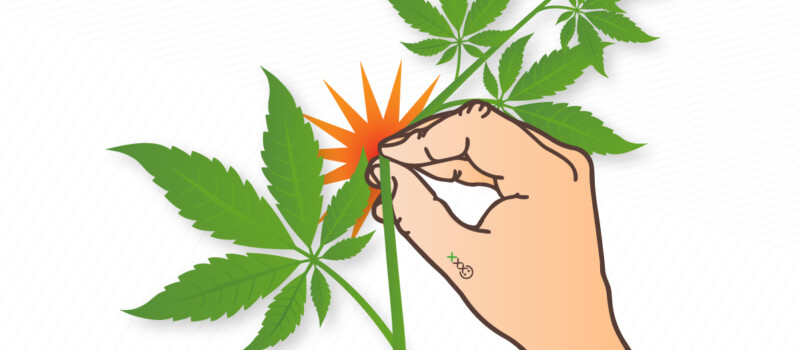When you hear someone talk about supercropping cannabis, are you thinking about highly advanced and complicated grow techniques? Surely, stuff like that is way out of your league? Well, think again! To be fair, supercropping does require some basic skill to get it right. Still, with the right information handy, you too can profit from this technique, raising your harvest results to an even higher level. Supercropping all boils down to the act of directing the growth of your cannabis plants. Sometimes, our green little darlings grow so fast that they need a bit of direction from us growers. And you are about to become one of ‘us growers’ once you’ve read this blog. Below, you’ll learn all you need to know about why supercropping is useful, how to do it, and when to apply the technique.
A big shoutout from Amsterdam to Totogrow for his sage advice and great images! Scroll down for a link to his useful instruction video!
Table of Contents
What Exactly Is Supercropping Weed?
Supercropping as a technique involves bending the stems of your plants to prevent them from growing too tall. The goal is to gently twist the branches without snapping them. With the right type of support, the stems, branches, and buds will keep on growing upward. The big difference is their new starting point, which you have bent down to a lower position to change the shape of your weed plants.
Why Try Supercropping?
Twisting the stems of a cannabis plant until they nearly snap; perhaps the thought alone is enough to give you the shivers. Still, there are a few good reasons for growers to do just that. After all, few grow experts would resort to supercropping cannabis if it weren’t useful, would they? The main point of supercropping is to get more control over the spread of your plant canopy. As your cannabis goes through the growth stage of its life cycle, you’ll notice how some plants reach much higher than those around them. That can cause your tallest ladies to block the light, depriving the smaller plants of much-needed fuel for photosynthesis, i.e., growth. In case of indoor growing, your tallest plants will force you to raise your lighting rig. That means that at the end of the day, you’ll be unable to distribute the available light evenly among your weed plants. For some high growth rate strains, like Critical Mass or Super Silver Haze for instance, supercropping can be the easiest way to adjust plant size to the space you have available.
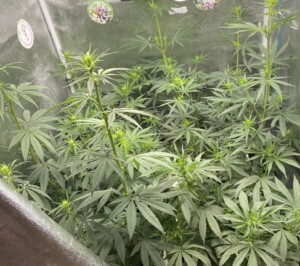
Another good reason to use supercropping is to direct your plants to spots where the light is not fully exploited by the leaves. Of course, you could also decide to supercrop because your plants are getting too big for your grow tent. In case of outdoor grows, keeping a low profile can be a big advantage to avoid your plants being spotted by your neighbours. Besides, even out in open air , sunlight can be a precious commodity you and your plants want to make the most of. That makes supercropping a handy technique to know, whether you’re growing weed in your garden, on a cramped balcony, or in a spacious indoor grow room.
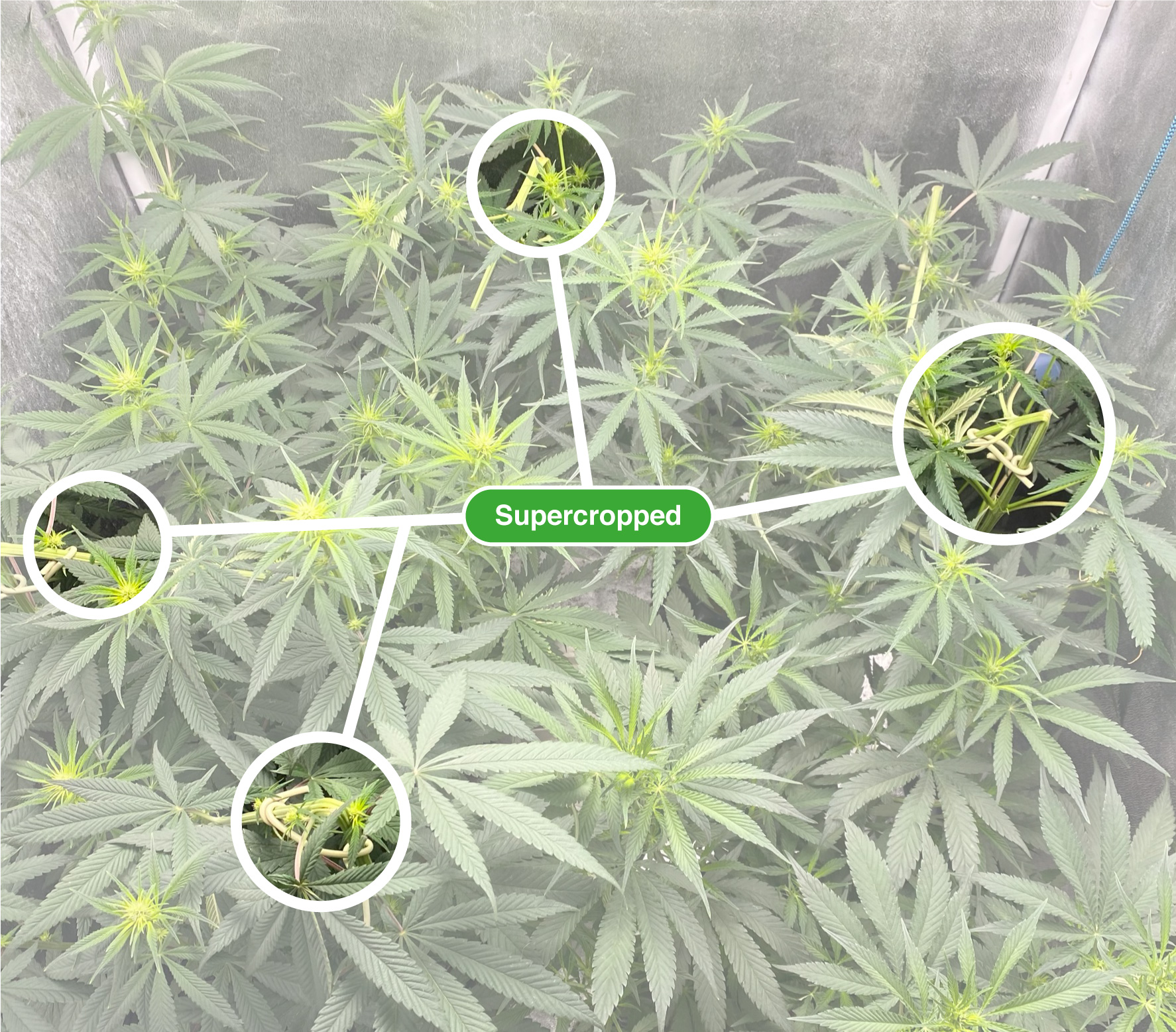
Supercropping As High Stress Training
Supercropping is officially listed as a High Stress Training (HST) technique, just like topping and fimming. Even though the technique will stress out your cannabis, however, there are benefits for the plant that make it worth your while. It encourages growth and promotes lush, well-developed colas. In fact, the right amount of stress will even encourage cannabis plants to produce more terpenes and cannabinoids.
So when you supercrop, you are trying to stress out your plant to the exact right degree. Stress will trigger your plant to fight harder for survival. And guess what one of weed’s main defence mechanisms for survival is? That’s right: it produces trichomes full of lovely cannabinoids for protection! The trick with High Stress Training techniques like supercropping is knowing when to stop. It’s the same as with people, really. Stress them a little and their performance improves; stress them too much and their health starts to suffer.
Depending on genetics, though, stressing plants always comes with a risk of sparking a backlash. Female plants can sometimes respond to stress by turning into hermaphrodites, able to produce seeds as well as pollen. You’ll need to keep a close watch on your plants after supercropping. As soon as you see male reproductive organs develop on any supercropped plants, remove them before they get the chance to pollinate your female plants.
Can You Supercrop Autoflowers?
The short and sweet answer here is: no you can’t. Of course, in theory, everything is possible. You can try if you like, but you are highly likely to generate too much stress. Autoflowers have a lot of advantages, but their genetic background makes them less able to deal with stress compared to non-autoflower photoperiod plants.
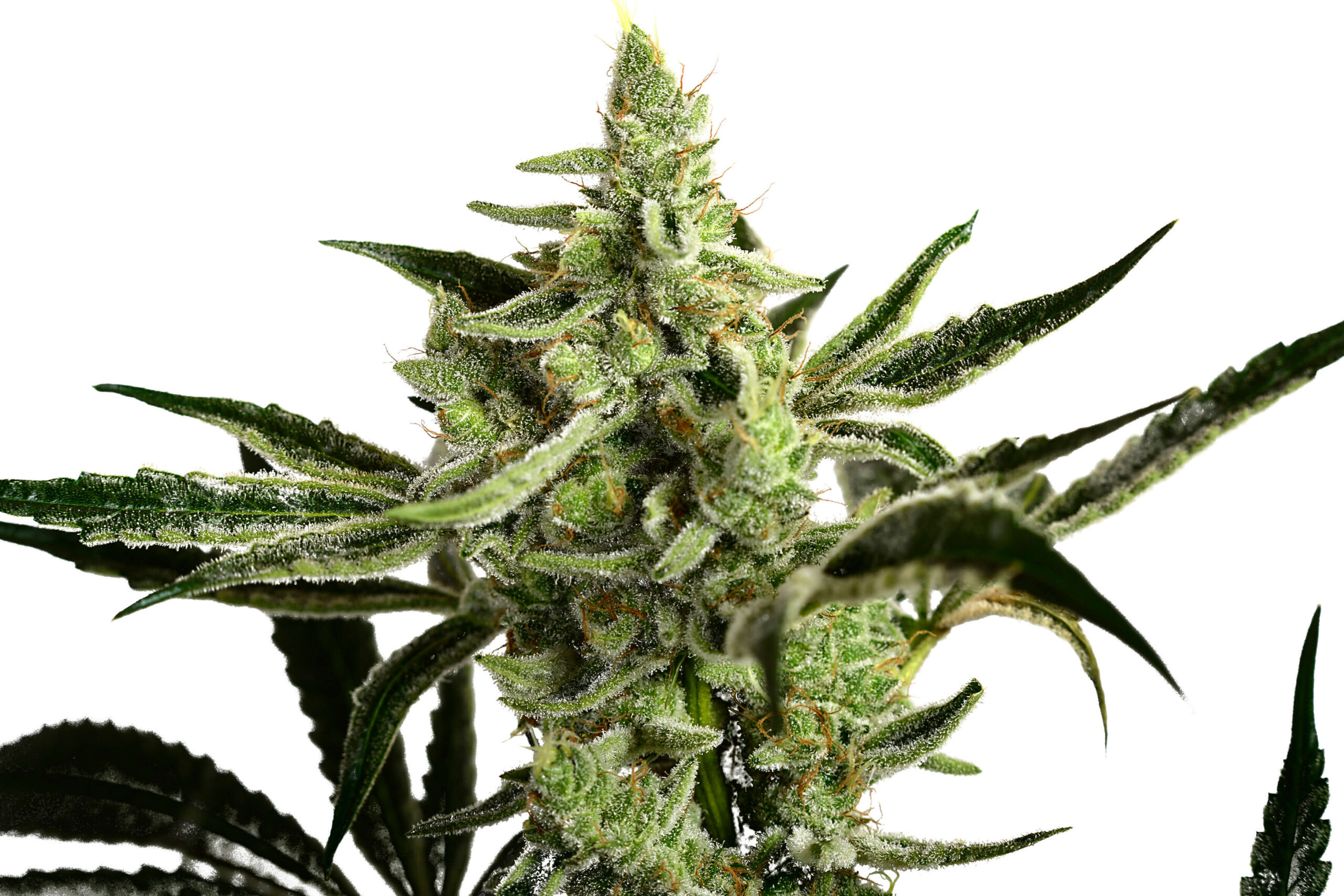
What Is The Best Time To Supercrop Weed?
Supercropping should be done at the peak of the growth or vegetative stage in your cannabis plant’s life cycle. At this point, your plants are growing at maximum speed; growers call it stretching. The degree of stretch and the exact timing of stretching vary between strains. It generally happens during the final stage of the vegetative phase, about a week before flowering starts. Stretching can continue until about two weeks into flowering. Supercropping beyond that point would be unwise. Any time and energy your plant has to invest into recovering from the intervention cannot be spent on growing big, healthy buds.
Supercropping: How It Works
Application of this technique calls for a bit of delicacy. If you mess up, you risk snapping stems instead of merely bending them. That will damage your plant, but if it does happen, there’s no need to panic – we’ll explain how to fix it below.
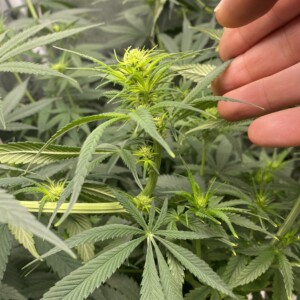
Step 1: Pick Your Branch
Start by finding suitable branches; these are usually the ones that stick out above the developing canopy. Thirty centimetres is an absolute minimum; the rest depends on how you want your future supercropped plant to look. Take some time to envision the perfect shape for your canopy. When picking stems, try to avoid overly woody ones, since these tend to break easily. Green, pliable stems can bend further before they snap. If you have to supercrop woody branches regardless, you can use small pliers to gently bruise the inside of the branch before you start bending. Be careful not to rip the outer layer though.
Pro Tip: Wait until your soil is nearly dry before you start supercropping. Dry plants will grow droopy, which makes bending easier. Don’t forget to water them after you’re done, though!
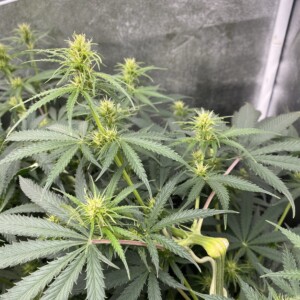
Step 2: Squeezing And Bruising
Determine the direction you want your branch to bend in, and pick your spot to make the squeeze. Aim for somewhere in between two nodes. Place your thumb and index finger on the stem and squeeze. You can be firm here, as long as you don’t use your nails. Rolling the stem between your fingers is a good way to bruise the stem evenly. Your goal here is squash the inside of the stem to make it more pliable. Always be careful to leave the outer layer intact. This is where the nutrients are transported throughout the plant. If you interrupt the nutrient flow completely by ripping the stem all the way, energy can’t flow to the upper parts and these will wither. While gently bruising the stem, bend it in the intended direction. Always work with restraint and control.
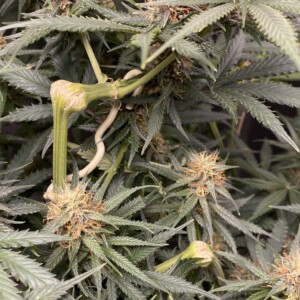
Step 3: Bending And Supporting
Stems can be bent at angles of up to 90°. Once you reach the intended shape, provide support by tying the branch using sheathed wire available from your local nursery. Don’t use regular wire, strings, or rubber bands, because they can choke off and damage your branch. You can also use struts or frames for support from below if you prefer. Your plants should recover from supercropping within a few days. Some growers prefer special copper wire used in bonsai tree training. Be careful not to tie your plant too tightly, because that could accidentally block the nutrient flow. Other growers are lazy (or clever) enough to use the trellis frames from their SCRoG screens for support while the branches heal. Be careful with outdoor plants: strong winds can snap branches even after they recover. Outdoor supercropping calls for some added support as well as extra protection from heavy winds.
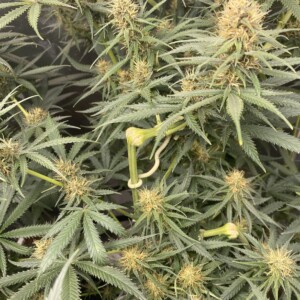
Step 4: Recovery
If bending was successful, there’s nothing to it but to wait and trust your plants’ regenerative capacity. As a rule, plants grow towards the light, so any horizontally supercropped branches should bend back up as they grow on. Keep an eye on the end of the branches to make sure they keep looking fresh and lively. Also, make sure to use your supercrop efforts to full effect by spreading the leaves as much as you can. Did you use tape to cover any damaged areas? Then make sure the plant doesn’t growth doesn’t overextend the tape or wires. If you’re not careful, that can squeeze off the nutrient flow too.
Oh Snap! Supercropping First Aid
No matter how careful you are, accidents do happen when supercropping. A little too much pressure can snap your branch or rip a chunk out of the outer layer. If this happens, simply prop up the snapped branch with whatever you have lying around and wrap some duct tape around the damaged section. These materials are tough, and they also protect exposed parts against bacteria and other nasty beasties. Duct tape is your go-to material for outdoor grows. Indoors, you can just use masking tape instead. This has the benefit of being less adhesive; once your plant resumes growing, the ‘band aid’ will just come unstuck by itself.
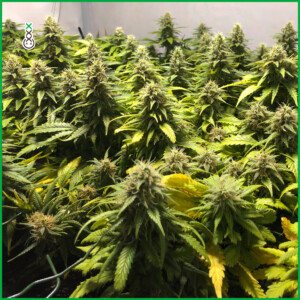
Supercropping For Super Buds
As you can see, supercropping is not as complicated as it seems. It can really boost your harvest results if done right, because your plants can make the most out of all available lamp or sunlight. It does take a bit of patience and a gentle touch, though. If you are working with limited space, or you just want to increase your harvest, supercropping can be a very useful technique. Many growers like to combine supercropping with fimming or topping. If you want to give that a try, wait for at least a week while your plant recovers, sprouting two or more new growth tips where you cut it. As soon as the new tips are firm enough, you can carefully apply supercropping to bend them in the intended direction. That way, you can create a kind of T-junction that extends in two directions.
If you want to give this technique a try, start out with a few thin branches to see whether you’ve got the touch. You could even test it on other plants you have in your garden to reduce risks. If the branches bend without snapping, you’re all set to give your weed plants a supercropping treatment.
Want to see how supercropping works in real life? Check out this instruction vid on supercropping by our grow bro TotogrowUK!








